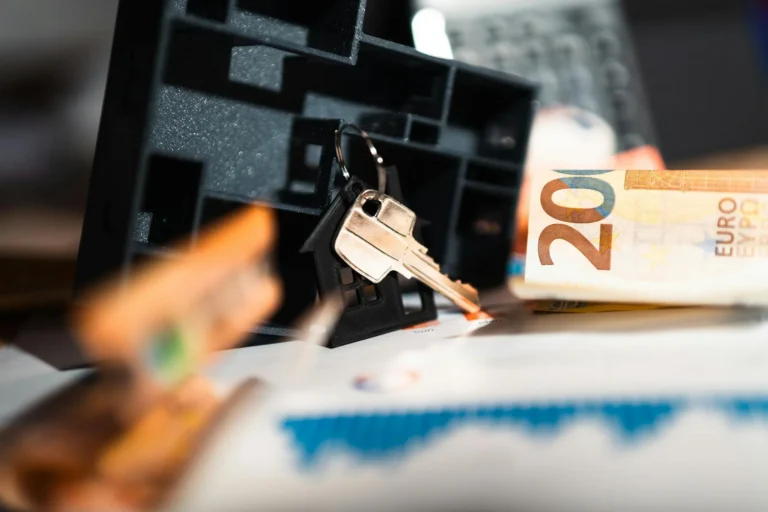Let’s talk about that drawer full of unused gifts in your apartment. You know the one – stuffed with gift cards for restaurants you never visit, skincare products from brands you don’t use, and that one luxury toaster despite not eating toast. This isn’t just clutter, it’s a financial black hole where well-intentioned money goes to die.
A growing movement among Austria’s international residents is challenging traditional gift-giving norms with a simple yet provocative proposition: what if we just gave cash instead?
The Financial Fallacy of “Thoughtful” Gifts
The math behind traditional gift-giving is brutal. Every unwanted €50 gift card represents €50 of someone’s hard-earned money that achieved nothing. It’s a lose-lose scenario – the giver is out money, and the recipient gains clutter. The prevailing sentiment among financially-savvy expats is that this ritualized waste needs to stop.
Consider this scenario: you spend hours finding the “perfect” gift for a friend’s birthday. You drop €80 on something you think they’ll love. They politely accept it, but it sits untouched for months before eventually being donated or sold for €15 at a flea market. The net result? €65 of value simply vanished into the ether.
Multiply this across birthdays, holidays, and life events, and you’re looking at thousands of euros annually being flushed away in the name of tradition.
The Austrian Context: Where Saving Meets Gifting
What makes this conversation particularly relevant in Austria is the country’s complicated relationship with money and gifts. On one hand, Austria has a strong saving culture, epitomized by events like Weltspartag (World Savings Day) on October 31st, where banks literally hand out gifts to encourage people to save more.

On the other hand, Austrian social etiquette often frowns upon direct cash gifts as impersonal or “vulgar” in certain circles. This creates a fascinating tension: a culture that prizes financial prudence simultaneously maintains gift-giving norms that encourage wasteful spending.
Creative Compromises: Making Cash Feel Personal
The resistance to cash gifts isn’t entirely unfounded – there’s something to be said for the effort and thought behind a well-chosen present. But innovative solutions are emerging that bridge this gap.
Companies like KADO now offer personalized frames designed specifically for presenting cash gifts. These aren’t just envelopes, they’re beautifully crafted displays with laser-cut designs where money becomes part of the art. After the cash is removed, the frame can be used for photos, transforming a financial gift into a lasting memento.
This approach solves the “impersonal” problem while maintaining financial efficiency. The recipient gets exactly what they need (purchasing power), and the giver demonstrates thought through the presentation.
The Social Dynamics of Changing Traditions
Implementing a cash-first gift strategy requires navigating some tricky social waters. Many international residents report that simply announcing “I’m only giving money from now on” can come across as abrupt or even insulting.
A more nuanced approach involves gradual introduction and clear communication. Some successful strategies include:
- The “Experience Fund”: Frame cash gifts as contributions to specific experiences the recipient wants (travel, courses, hobbies)
- The “Upgrade Method”: Give cash specifically for upgrading something the recipient already uses and values
- The Group Gift Approach: Pooling money with others for larger, meaningful purchases that the recipient actually wants
The key is positioning cash not as a lazy alternative, but as a respectful acknowledgment of the recipient’s autonomy and preferences.
When Material Gifts Still Make Sense
This isn’t a blanket condemnation of all physical gifts. The exceptions matter:
- Handmade items: Something created with time and skill carries inherent value beyond money
- Consumables: High-quality food, wine, or experiences that will be used and appreciated
- Specific requested items: When someone explicitly asks for something particular
The problem isn’t physical gifts themselves – it’s the assumption-driven guessing game that leads to most mismatches between giver and receiver.
Practical Implementation: Your Cash-Gifting Strategy
If you’re ready to make the switch, here’s how to implement it smoothly:
- Start with close circles: Begin with friends and family who understand your financial philosophy
- Create “occasional exceptions”: Maintain the ability to give traditional gifts for truly special moments
- Develop presentation rituals: Use quality envelopes, write meaningful notes, or invest in those creative cash-display frames
- Communicate preferences: Let people know you’d prefer cash gifts for yourself, leading by example
The Environmental Bonus
Beyond the financial logic, there’s an environmental argument for cash gifts. Fewer unwanted products mean less manufacturing, packaging waste, and eventual disposal. In a country as environmentally conscious as Austria, this aspect resonates with many residents’ values.
The Bottom Line
Giving cash instead of physical gifts isn’t about being lazy or unthoughtful – it’s about respecting both your financial resources and the recipient’s autonomy. In a world where minimalism and financial independence are increasingly valued, the traditional gift-giving industrial complex feels increasingly outdated.
The next time you’re reaching for that “thoughtful” gift that might end up in a drawer, consider this: the most thoughtful gift might just be the freedom of choice that comes with cold, hard cash.
Your friends’ drawers will thank you, and so will your bank account.



